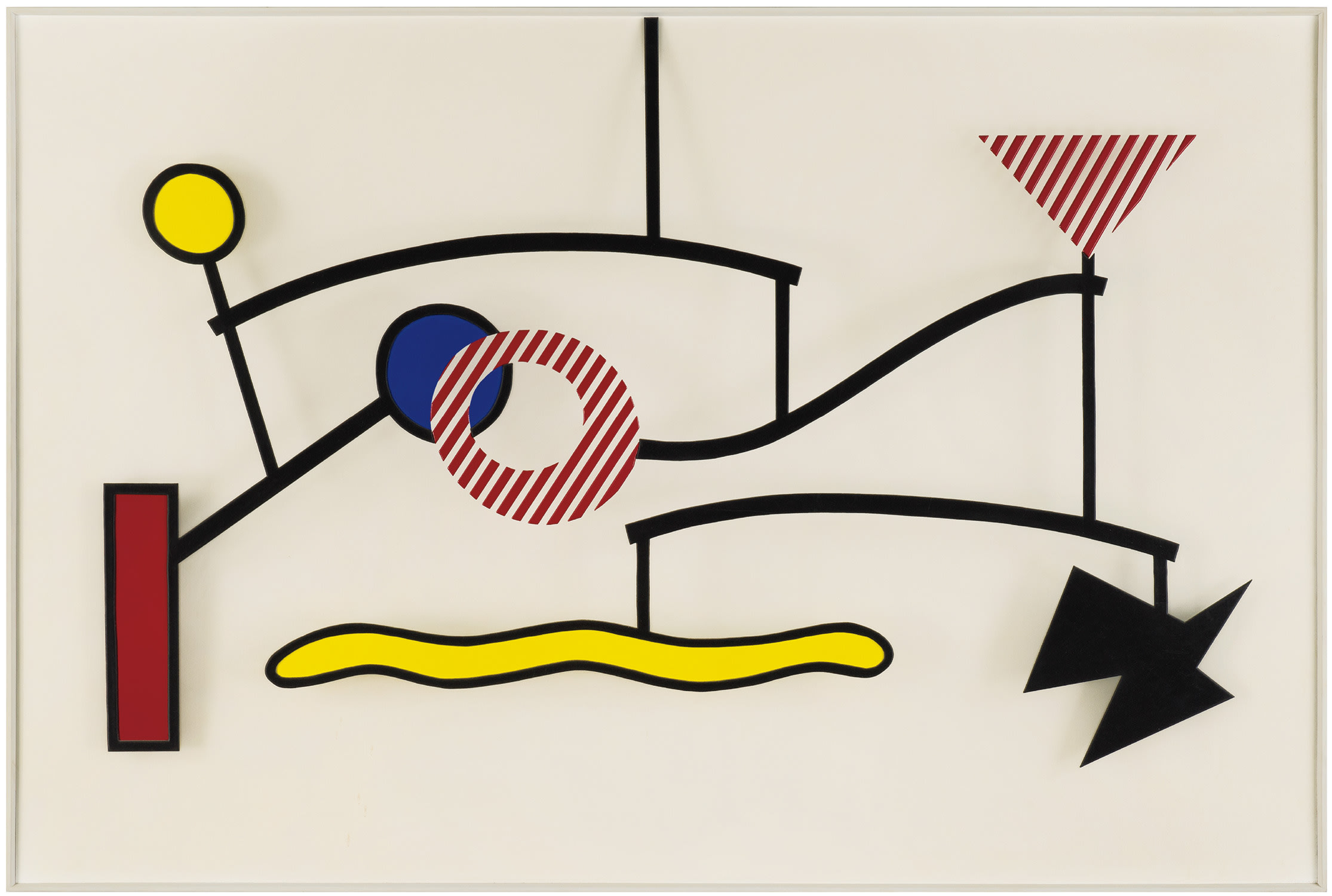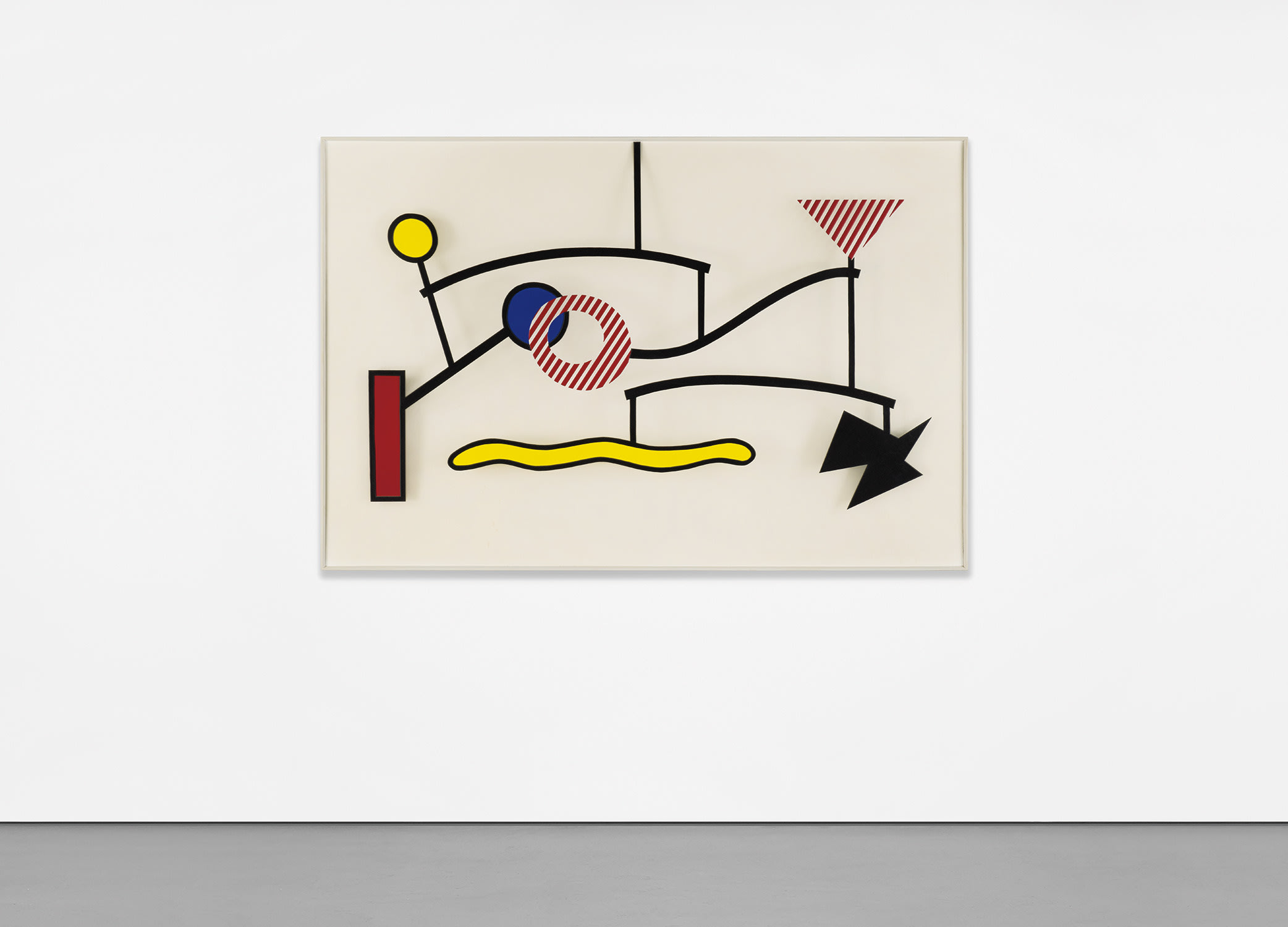



Property from the Collection of the late Betsy Burton
164
Roy Lichtenstein
Suspended Mobile
signed, numbered and dated "19/19 rf Lichtenstein '90" on the backing; stamped with the Saff Tech Arts mark and number "RL90-002"
magna and silicone screenprint on polyester monofilament fabric, stretched over concave epoxy resin and fiberglass frame
50 3/4 x 75 3/4 x 3 7/8 in. (129 x 192.3 x 10 cm)
Executed in 1990-1991, this work is number 19 from an edition of 19 plus 1 bon a tirer, 2 printer's proofs, 1 presentation proof, 2 Saff Tech Arts proofs, 1 archive proof and 4 artist's proofs.